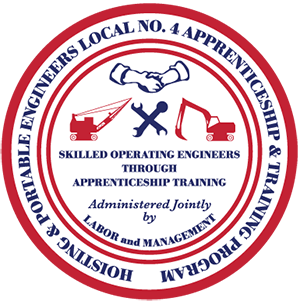Brothers and Sisters,
The long-awaited summer season has arrived! This year looks to be another busy and profitable one. Many thanks to the hard work and dedication of Business Manager Michael Bowes and his team. I would also like to recognize the apprenticeship class of 2024. They worked hard and have grown into great operators. I wish them all long, safe careers. It took a lot of work to get them there. Luckily our Training Coordinator, Michael Carey, as well as Office Manager, Michele Maimone, are two of the best there is. A big thank you to them from all of the instructors.
A good working knowledge of proper rigging techniques and inspection criteria is important to all operating engineers. No matter how well we inspect and maintain our machine it is only as good as the rigging it is attached too. There is plenty of good reference material out there to assist you. Two of my favorites are the NCCCO Rigger reference manual and the handy IPT Crane and Rigging manual.
OSHA says that each day before being used all slings and rigging hardware shall be inspected for damage or defects by a competent person designated by the employer. All slings should have permanently affixed and legible identifications markings as prescribed by the manufacturer that indicate the safe working load. For alloy steel chain slings the competent person must measure the links to make sure they are within the tolerance specified by Table N in 1910.184.1. Also, alloy steel chain slings with cracked or deformed master links, coupling links or other components shall be removed from service.
Synthetic slings are very popular on today’s job sites due to their light weight and ease of storage. This also makes them more susceptible to wear. Their removal criteria are as follows: acid or caustic burns; melting or charring of any part of the sling surface; snags, punctures, tears or cuts; broken or worn stitches; or distortion of fittings.
Wire rope slings shall be removed from service if they have ten randomly distributed broken wires in one rope lay, or five broken wires in one strand in one rope lay. If there is wear or scraping of one-third the original diameteroftheoutsideindividualwires it must also be removed from service. Kinking, crushing, bird caging or any other damage resulting in distortion of the wire rope structure also renders the sling unserviceable.
Remember if the other trades see a squared away operator who is proactive on their inspections, they will follow suit. As operating engineers we must set the tone. Ultimately it is our call if that load gets hoisted!! Please contact the Engineers Training Center with any and all safety or training questions. Be safe!!
Fraternally yours,
Co-Safety Officer
